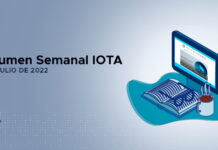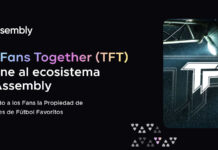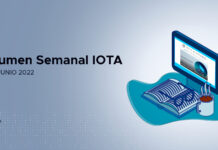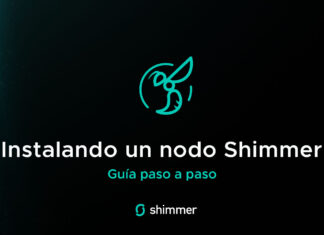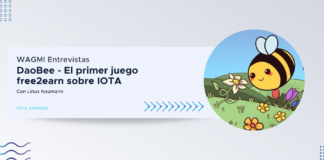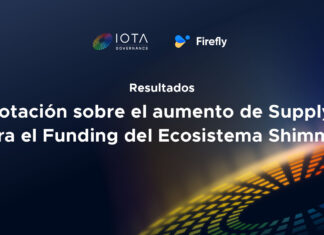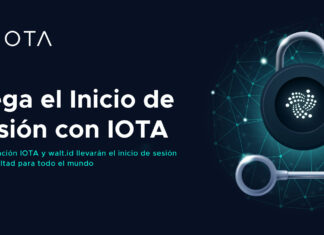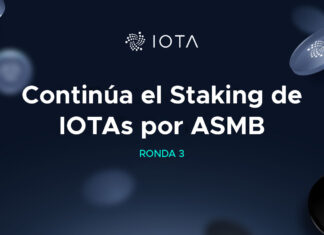
Engineer Umair Sarfraz is a valued member of the IOTA Foundation, with extensive experience in software development. He is part of the selected team working behind the brand new IOTA wallet: Trinity. Let’s get to know a little more about his background and other projects he has been involved in at IF.
Geronimo Patat
Writer and Editor, IOTA Hispano
If you like what we are doing, help us to keep working! Donations: https://iotahispano.com/donate/
Tell us a bit about your background
I was born in Islamabad, Pakistan and have spent most of my life here. I graduated in Software Engineering. I am due to submit my MS (Information Security) thesis in the next couple of months. I was involved in many projects (mostly web application development) during my bachelors. Right after completing my bachelor degree, I joined a cloud security company where I was part of the development team for building security services around cloud orchestration tools.
What’s the story behind your approach to DLT? When did you discover them
Well, I had heard about Bitcoin but I never took out time to understand the technology behind it. In the summer of 2017, I invested some time in understanding the protocols behind large scale system deployments, especially how decentralized databases work under the hood. Back then, I was doing some devOps stuff around Docker Swarm and Kubernetes. I learned more about it with time, but that was the entry point to DLT for me.
When did you find out about IOTA and what were your first thoughts?
I cannot honestly remember specifically when I first found out about IOTA but I guess it was August or September of 2017. The DAG based approach for scalability and a feeless model instantly caught my interest. After reading the whitepaper and other available information at that time, I had some questions unanswered so I joined the community slack workspace. Gradually, as I learned more and interacted with more people on the slack, I became more convinced that IOTA protocol is a breakthrough in the IoT space and also that it actually solves the inefficiencies of the existing distributed ledger technologies.
Can you ELI5 how a promoter works? what is the difference with a
reattacher?
A promoter in very simple words, helps a transaction to get confirmed quickly. Because of the way tip selection works, the confirmation chances are less for a transaction that stays pending for a long period. Promotion is just a spam (zero value) transfer on the tangle. One of the transactions that it approves, is the original transaction you are trying to get confirmed. The spam transfer is more likely to get confirmed and it also adds to the cumulative weight of the original transaction. Reattachment simply picks two new random tips and attaches a copy of your original bundle in some other part of the tangle. It’s kind of a double spend and for the same reason only either your original transaction or one of your reattachments will ever be confirmed on the network. Transfer confirmation with promotion/reattachment is most effective when these two are used in conjunction. Promotion becomes ineffective after some milestones because random walks won’t be able to start from your reference transaction, so to make it effective in this case, a reattachment is required and the subsequent promotions should reference the most recently replayed bundle.
What is Tangle archive? Tell us, what can this project provide to the ecosystem.
Well, I did some work with Dr. Navin Ramachandran and James Brogan from UCL in exploring Tangle as an integrity layer for health care data. We wanted to do some experimentation and we felt the need for a tool for easily traversing historical tangle data. The main goal for tangle-archive was to develop a generic tool that could use any storage option for easily and optimally traversing Tangle history. The development is on the back burner because of my involvement in the Trinity wallet, but I definitely plan to make further improvements to tangle-archive soon.
You are one of the developers behind Trinity, tell us how did you join the project and what were your contributions.
Well, I had been in contact with Dr. Navin Ramachandran related to some research discussions back in October 2017 I guess. I cannot honestly recall what lead to the discussion regarding the new IOTA wallet (it wasn’t called Trinity back then) but when we talked about it, I became interested in contributing to the project. My initial contributions were specifically to the android side but gradually I worked through almost every area of the wallet. Auto promotion, state management, address reuse prevention, managing state syncing across multiple devices – these are some of the areas specifically that I have developed in Trinity.
What was the most difficult thing in the development of Trinity?
Well obviously there are great benefits using a cross platform stack but there were areas that we had to invest time in for performance improvements. The most difficult thing I think was to improve performance without compromising even a fraction of security of the wallet.
What is the next update in the project?
Well, after the public release our goal has been to keep iterating on the reported bugs and suggestions. In parallel we’re looking at performance improvements on old devices background auto promotion/state syncing. We’re also working on node-quorum within wallet.
Do you have any other project in mind?
Of course, yes. I have some ideas that I would like to take out time and work on. One of the very first things I worked on was something related to a management, monitoring and alerting application for IRI. I would definitely like to complete it soon as I believe it would be a very helpful tool for the node owners and also for people exploring IOTA technology.
What do you think about Qubic? Is there any feature in the clipboard to implement in Trinity?
Well my personal understanding about Qubic is that it enables distributed computations on a much much larger scale. I am really excited and curious at the same time on how the final design will support smart contracts on top of the tangle. Yes, there might be some features that we can implement in Trinity with Qubic but not in near future.
If you like what we are doing, help us to keep working! Donations: https://iotahispano.com/donate/







